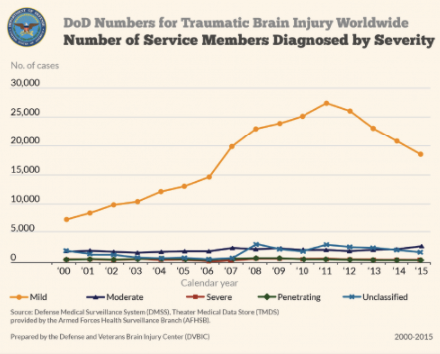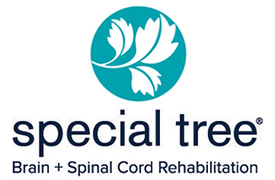DoD Worldwide Numbers for TBI
DVBIC is the Defense Department’s office of responsibility for tracking traumatic brain injury (TBI) data in the U.S. military. On this page you’ll find annual and quarterly reports that provide data on the number of active-duty service members — anywhere U.S. forces are located — with a first-time TBI diagnosis since 2000.
Service members can sustain a TBI during day-to-day activities, such as while playing sports or participating in recreational events, military training and military deployment. The majority of traumatic brain injuries sustained by members of the U.S. Armed Forces are classified as mild TBI, also known as concussion. Most service members who sustain a mild TBI return to full duty within seven to 10 days through rest and the progressive return to activity process, in which patients gradually return to normal activity using a standardized, staged-approach. Further treatment is available if symptoms persist after the recommended rest period. Review our clinical resources for more information.
Annual Totals at a Glance



About the Data
Where do the numbers come from?
How are TBI cases defined?
The first inpatient or outpatient TBI medical encounter is identified using billing codes from insurance claims defined in the appropriate version of the International Classification of Diseases. The International Classification of Diseases, 10th edition, Clinical Modification (ICD-10-CM) took effect Oct. 1, 2015, replacing the ICD-9-CM coding guidelines. Military treatment facilities code medical encounters using ICD-10-CM and other DoD specific codes.
If a service member has sustained more than one TBI, are all of them counted?
If a service member has sustained more than one type of TBI, are both counted?
How often are the numbers updated?
What does a quarter cover?
- Q1 represents the period January 1 – March 31
- Q2 represents the period April 1 – June 30
- Q3 represents the period July 1 – September 30
- Q4 represents the period October 1 – December 31






